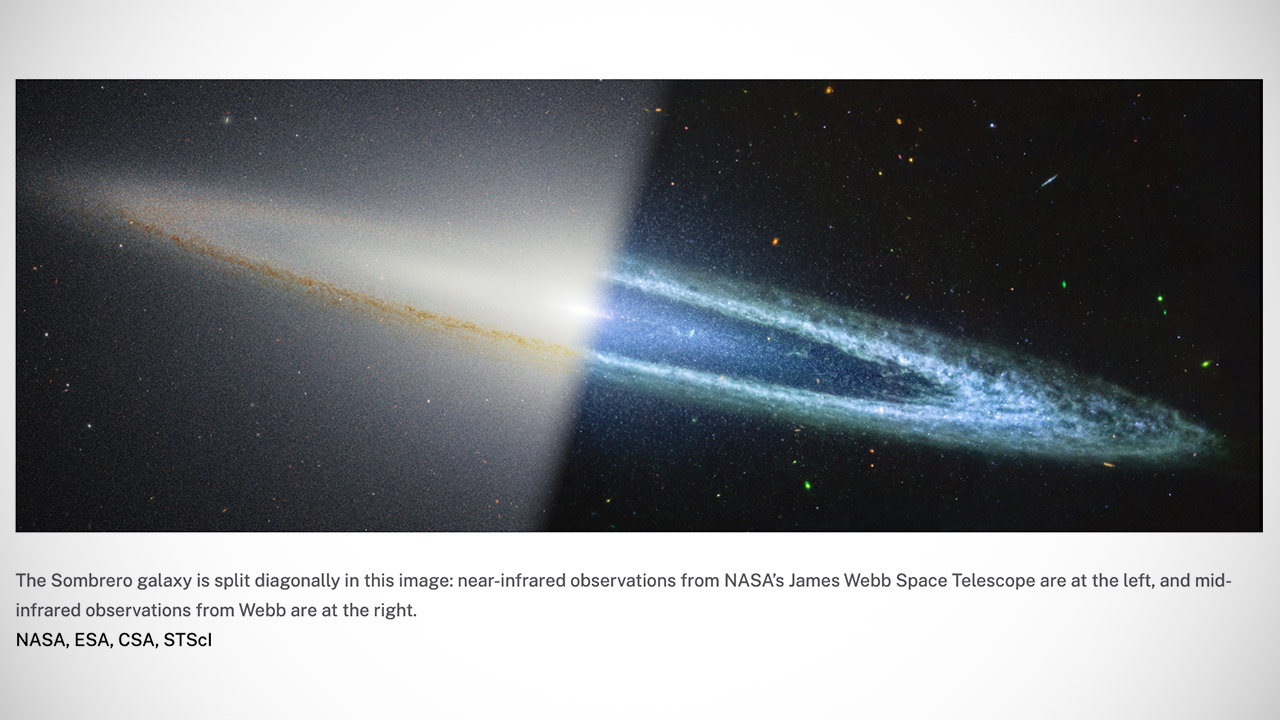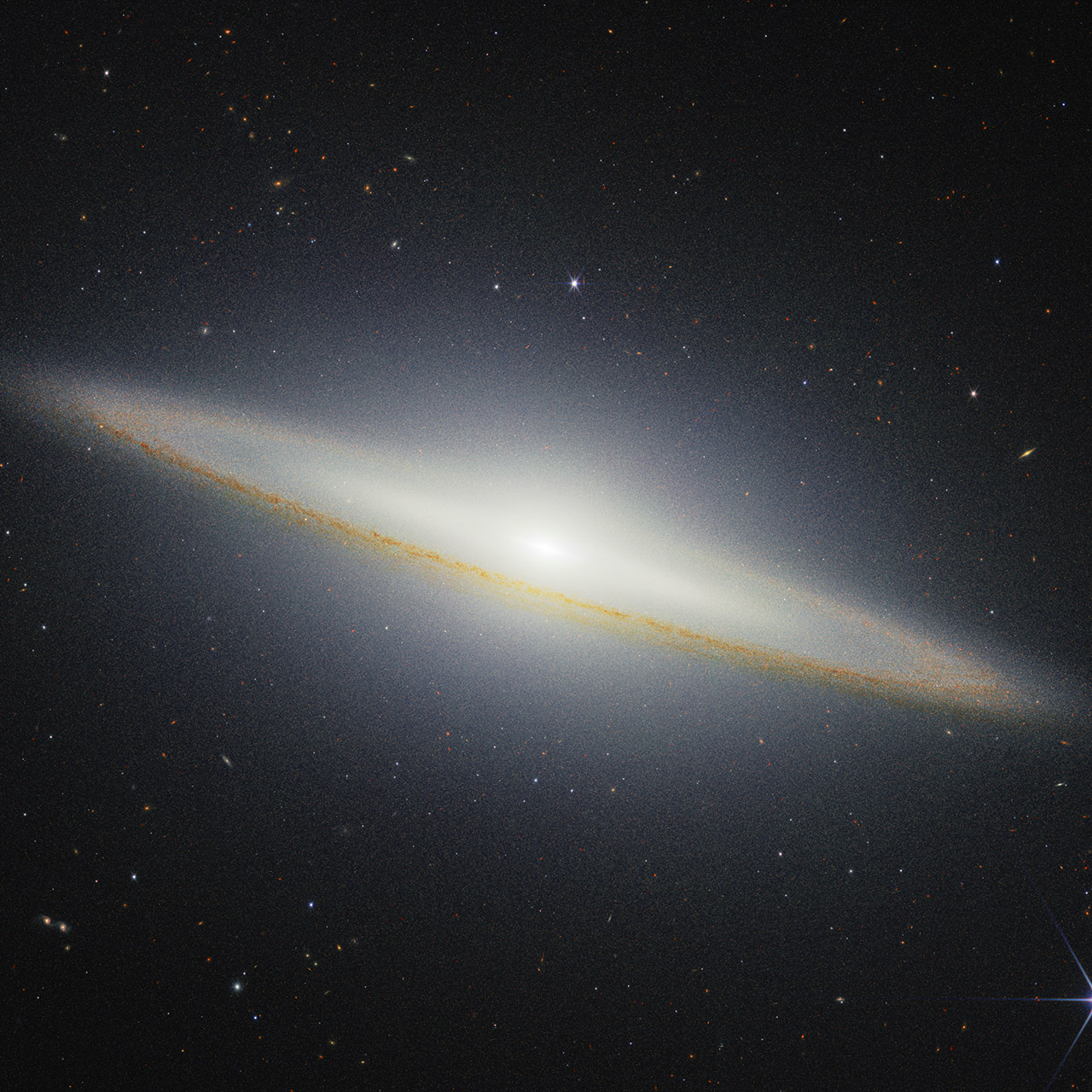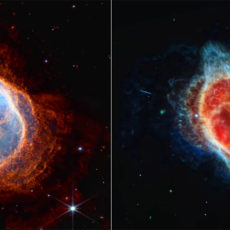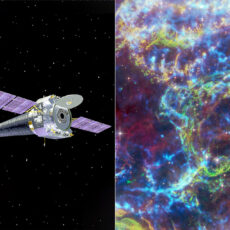
Photo credit: NASA/MSFC/David Higginbotham
NASA’s James Webb Space Telescope just gave the Sombrero Galaxy—Messier 104—a mind-blowing makeover, catching this cosmic icon 30 million light-years away in a way that leaves Hubble’s classic shots in the dust. Unlike Hubble’s visible-light pics, where a glowing core and stark dust lane steal the show, Webb’s near-infrared image flips things, spotlighting a dazzling central bulge while the dust fades into the background, building on its trippy mid-infrared view from late 2024.
Webb’s Near-Infrared Camera (NIRCam) is the star here, snagging light that slices through the galaxy’s dusty ring like it’s nothing. Stars pump out redder, longer wavelengths that dust barely blocks, giving a crisp view of the Sombrero’s jam-packed stellar bulge—a swarm of stars dominating the frame. “The dust disk doesn’t look as pronounced in the new near-infrared image from Webb’s NIRCam,” NASA says, showing how infrared tells a different tale than Hubble’s dust-heavy visuals. The result’s a galaxy core that pops like never before.
- NASA rocket model kit – Launch into a creative project with the LEGO Icons NASA Artemis Space Launch System model building project for adult space...
- What’s in the box? – This creative building set includes everything you need to craft a multistage rocket with 2 solid-fuel boosters, an Orion...
- Features and Functions – This NASA-themed rocket model features retractable launch tower umbilicals, rocket support and crew bridge, detachable...

The backdrop’s a cosmic bonus, littered with galaxies in wild shapes and colors, their hues dropping hints about their distance and quirks. The Sombrero, chilling edge-on in the Virgo cluster, stretches 50,000 light-years with a mass of 800 billion Suns. Its outer ring, less in-your-face here, still hides clues about star birth. Webb’s specialty for picking out individual red giants—big, bright stars—turns this into a goldmine for astronomers.

Flash back to 2024, and Webb’s Mid-Infrared Instrument (MIRI) showed a dustier Sombrero, its clumpy ring glowing with carbon-based molecules tied to star-forming zones. “Researchers say the clumpy nature of the dust… can indicate the presence of young star-forming regions,” NASA notes, but unlike star-crazy Messier 82, the Sombrero’s chill, birthing less than one Sun’s worth of stars a year. Its 2,000 globular clusters—tight balls of ancient stars—offer a peek into stellar history, with chemical mixes suggesting past galactic mash-ups. A warped inner disk, slightly off-kilter, backs that merger theory. “A merger of different galaxies over billions of years would explain this difference,” NASA’s crew says.
Lurking at the center is a 9-billion-solar-mass black hole, but it’s oddly low-key, sipping matter and spitting a faint jet instead of raging. “Between the Hubble and Webb telescopes, you get this very clear view of [galactic systems like the Sombrero],” says astronomer Kate Su. Near-infrared shows the starry spine, mid-infrared the dusty frame—together, they paint a galaxy sculpted by eons of cosmic chaos. “Studying galaxies like the Sombrero at different wavelengths… helps astronomers understand how this complex system formed and evolved,” NASA sums up.
















